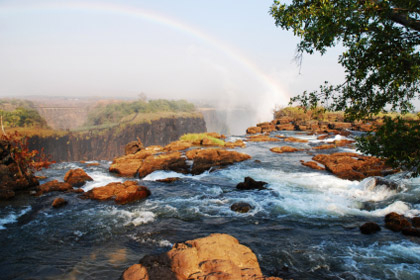Ecosystem Services & the True Value of Water
When was the last time you were consciously aware of how the ecosystem provides services? Whether it is the conversion of carbon dioxide to oxygen, the hydrologic cycle, growing food or recreation, the ecosystem provides services essential to existence. However, people tend to take the ecosystem for granted or, at most, to become aware when something bad happens. This is unfortunate in that it leads to two basic types of outcomes. First, humanity operates in a reactive mode and tends to become cognizant of ecosystem services only when they are either degraded or become altogether nonexistent. Second, people miss many opportunities to leverage these services not only to protect the environment but also to improve lives as well.
The good is that society is experiencing a movement toward more proactive and comprehensive ecosystem services valuation. In other words, this includes not only recognizing services nature provides but also giving them a value, including a monetary value, in order to better understand the role they play. The immediate reaction to such a statement may be one of skepticism and cynicism. After all, what right do people have to put a dollar value on a river, tree or wetland? Even if they did, just how would they do it?
Surprisingly, variations of ecosystem services valuation (ESV) have been in practice for a long time. However, most of the time, it was in a negative, reactive mode to address degradation that assigned value in order to assign penalties, fines and legal action. More recently, society is realizing a more proactive, positive movement to assess these
Rather than do a tutorial on the guide, which is readily available online, this article will provide an example of how Veolia Water is taking the concept of ESV to address stewardship of what is likely the most valuable resource, water. The intent is not to simply reduce water to dollars and cents as Veolia recognizes it has priceless value in the human context and is an essential pillar of nature as a whole. But the reality is that water is extremely undervalued throughout the world, even in areas where scarcity exists. True, the price of water varies globally, but in every case, that price is substantially below the true value of water.
Veolia’s premise is simply this: Once an organization recognizes the true value of water, which is invariably greater – many times substantially greater – than what people actually pay for it, they will use and manage water much more proactively and sustainably. In the business community, a key element of recognizing the true value of water is being able to assign a dollar value.

© iStockphoto.com/eAlisa | A view of Himalayan mountains with Tso Moriri lake in the foreground in Ladakh, India.
Businesses operate on financial parameters in order to survive. Even for activities that are more altruistic, such as philanthropy, supporting social causes and active community involvement, if the company cannot survive financially, it will not be around long to do those good things.
Now the “devil is in the details,” as the old saying goes. Calculating a true value of water is not a simple task, and a gallon of water has different values for different organizations, for different uses, in different places. So it is not simply a case of calculating a single, global “true value of water.” Hence, “standardizing” a true value per unit of water is not possible. What can be done, however, is to devise methodologies and approaches that an organization can use to arrive at such a value – for their specific use in their specific case. As selfish as this sounds, it is important for the organization to recognize what the value of water is to them in that it is they who need to take sustainable, resource stewardship actions.
Note that this does not preclude a company from needing to know what the value of water is to their stakeholders and local community, if that information helps them with planning and decision-making. Secondly, although this method speaks of companies, there is no reason a public sector entity or other type of organization cannot use the concept of ESV to assess the value of water for their situation. This could include a government agency assessing natural infrastructure risk management and so on.
As with ESV in general, there is more than one way to determine the true value of water. At Veolia Water, the company decided to develop a methodology and related tool that allows an organization to logically and systematically determine a true value of water. This is not done as an end in itself. Instead, it is a means to a greater end toward more sustainable water resource management and beyond – toward water resource stewardship. “Stewardship” is more inclusive and broader in regard to stakeholders and watersheds than “management,” which is traditionally more site and organization focused.
Risks can be 1.) operational, such as loss of supply or access to water, 2.) reputational, such as loss of the license to operate due to some action by stakeholders in response to real or perceived impact by the company on local water resources, 3.) financial, where an increase in the price of water becomes prohibitive to maintain profitability or 4.) legal/regulatory, where a change in laws or permitting restricts access to water or increases costs of treatment. For each of these risk categories, the company should identify all possible scenarios. Then, for each scenario, determine the impact.
For example, if a company’s access to a water supply is restricted, they may need to find an alternate source, to develop substitutes or to reduce production. Each of these has an associated financial impact, which can be normalized to production or some other comparative unit of measurement so they know how much water is involved. That new cost can be “added” to the current price of water to get closer to knowing the true value of water. Clearly, not all risks are equally likely to occur. So, to be more accurate, the probability of the risk occurring should figure into the equation. This way, a high value but unlikely situation will be treated differently than a lower financial impact but more likely situation.

© iStockphoto.com/empusa | Rainbow falls seen from the Zambian side of Victoria Falls.
Veolia’s approach takes all of these risks, their likelihood to occur and related per unit of water costs, and calculates a composite, true value of water. This value is more representative of what water is worth to the company, which leads to smarter planning and decision-making. Of course such approaches are neither foolproof nor totally perfect. However, it gets an organization much closer to an accurate risk-based management approach and does indeed improve decision-making.
And to the cynic who still thinks this cheapens the importance of the resource, it is highly unlikely that the true value is less than the current price and cost. So essentially in all cases of going through this exercise, a company will ultimately value the resource more and institute more proactive and sustainable water management practices. They will also work toward lessening their impact and burden on the resource on a broader scale, such as the watershed, that is shared by so many.
Finally, by figuring the true value of water into business decisions, it becomes easier to approve sustainable practices, such as water reuse technologies and wastewater resource recovery. This is because the pay back and return-on-investment is not based on a low current price but is corrected for the risk-based true value. Realizing that a low price of water means longer payback periods for capital projects and, hence, greater likelihood of it not being implemented, knowing the true value is better. It is better not only for the company that can be more prepared for risks but also for the society dependent on the resource.
Please note that this is not a hypothetical issue. There is more than one case study where these risks became reality, resulting in water-related cost implications. And these are not always insignificant. Recent cases in India and Asia of beverage companies needing to absorb losses in the hundreds of millions of dollars due to reduced access to water are all too real. Recognize that the ecosystem is more than a victim passively accepting human impact. Instead, the ecosystem is an active participant bringing value and services to society. These services, like all services, need to be recognized, valued and secured to ensure a sustainable society and a protected environment




























